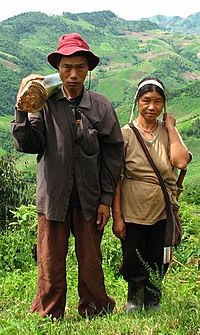
Photo from wikipedia
Smoking and sedentary lifestyle frequently co-occur among Latinos. Evidence suggests that moderate to vigorous physical activity (MVPA) may enhance smoking cessation rates. However, this synergistic phenomenon has not been studied… Click to show full abstract
Smoking and sedentary lifestyle frequently co-occur among Latinos. Evidence suggests that moderate to vigorous physical activity (MVPA) may enhance smoking cessation rates. However, this synergistic phenomenon has not been studied among Latinos, the largest minority group in the United States. This qualitative study consisted of semi-structured interviews in English or Spanish with Latino adults who smoke (n = 20) to understand their perspectives on physical activity. Participants were recruited using community-based recruitment strategies. The Health Belief Model was used as a framework for qualitative theoretical analysis. Multiple perceived benefits (e.g., mood management, strategy to quit smoking), susceptibility (e.g., risk of cardiovascular diseases, physical impairment), and barriers (e.g., lack of social support, low financial resources) of being physically active were identified. Moreover, multiple cues to action to do physical activity (e.g., being a role model, spending time with family and friends) were identified. These factors provide concrete operational strategies to address smoking cessation and physical activity among Latinos. Further research is needed on how best to integrate these perspectives into smoking cessation interventions.
Journal Title: International Journal of Environmental Research and Public Health
Year Published: 2023
Link to full text (if available)
Share on Social Media: Sign Up to like & get
recommendations!